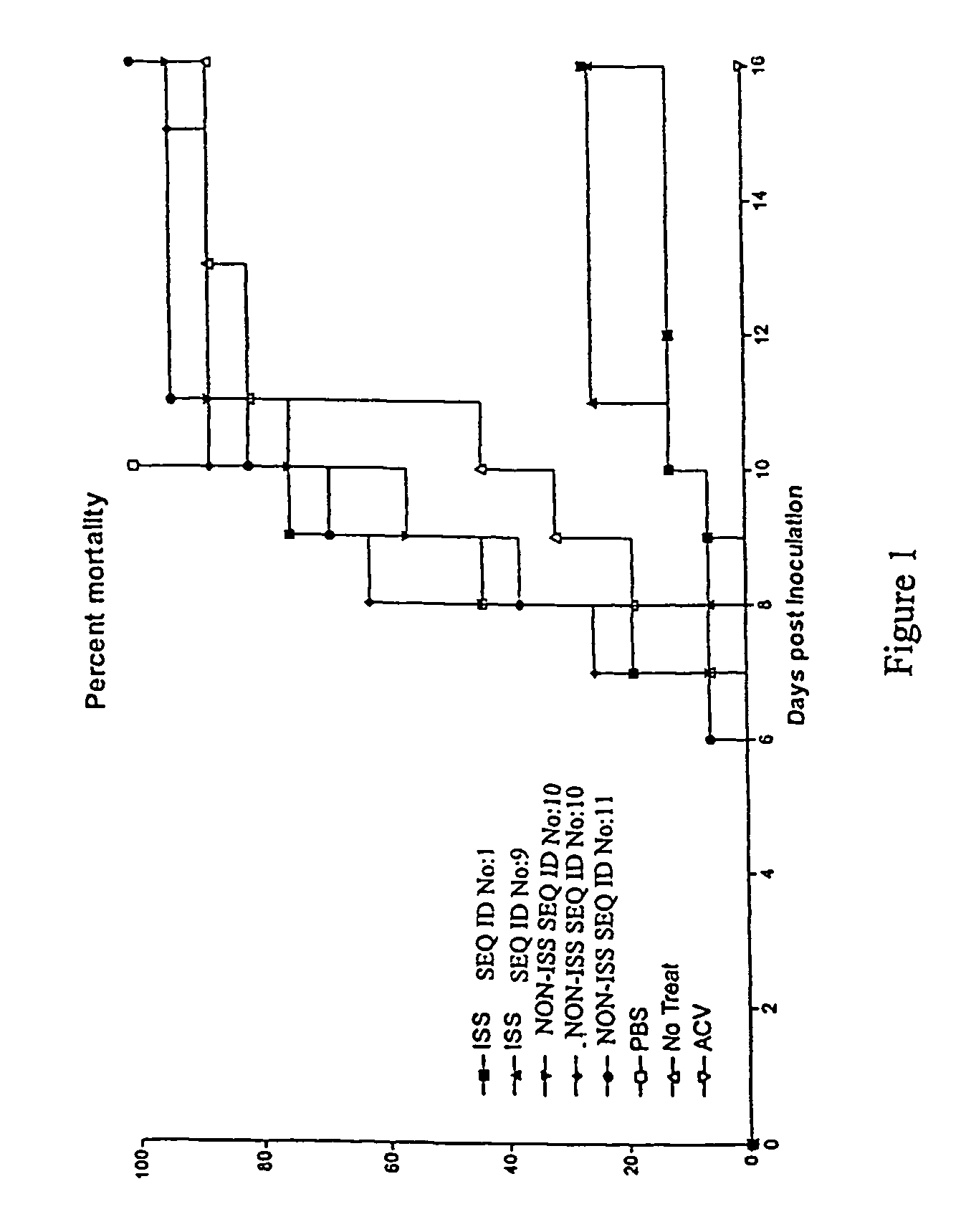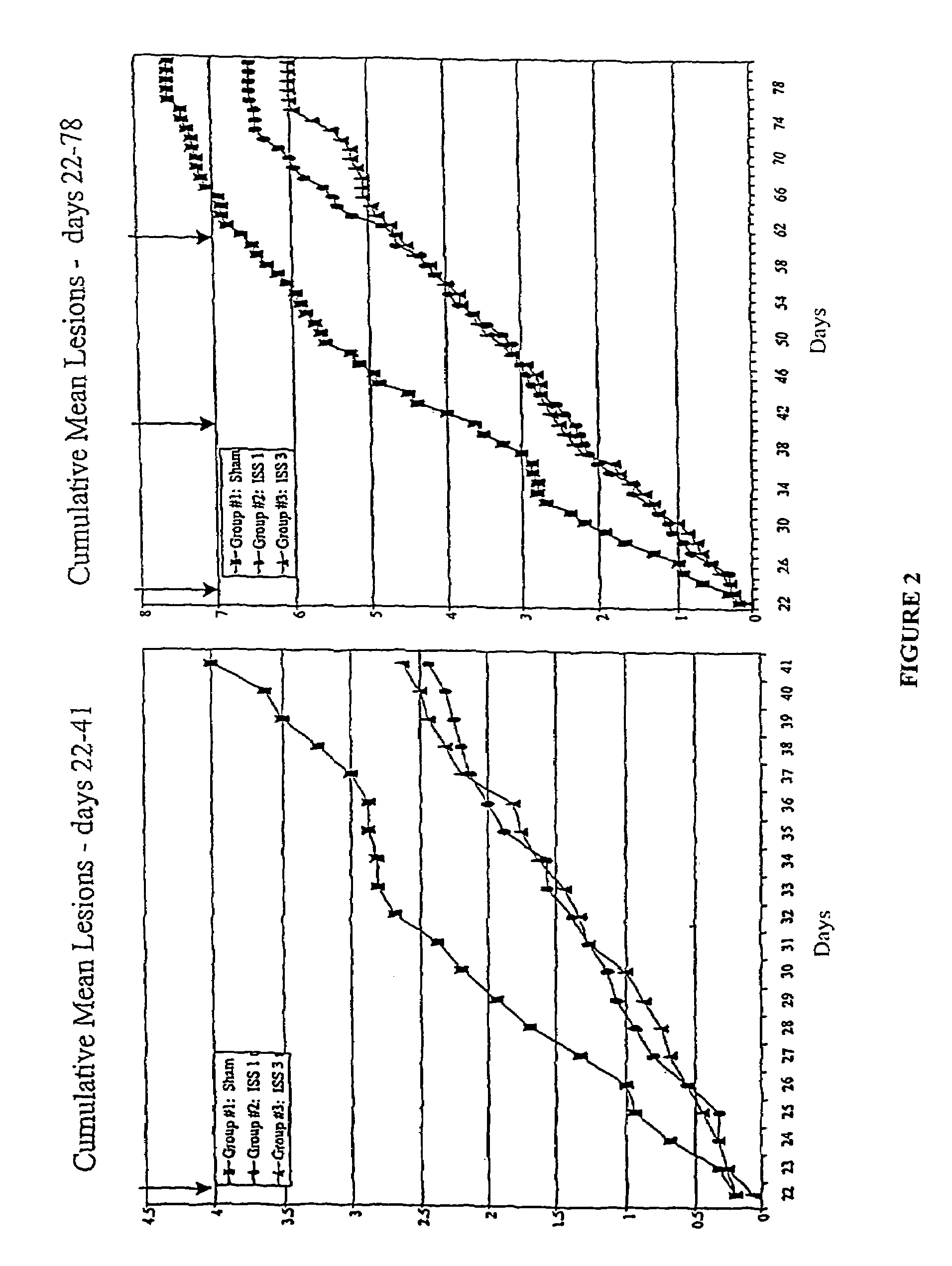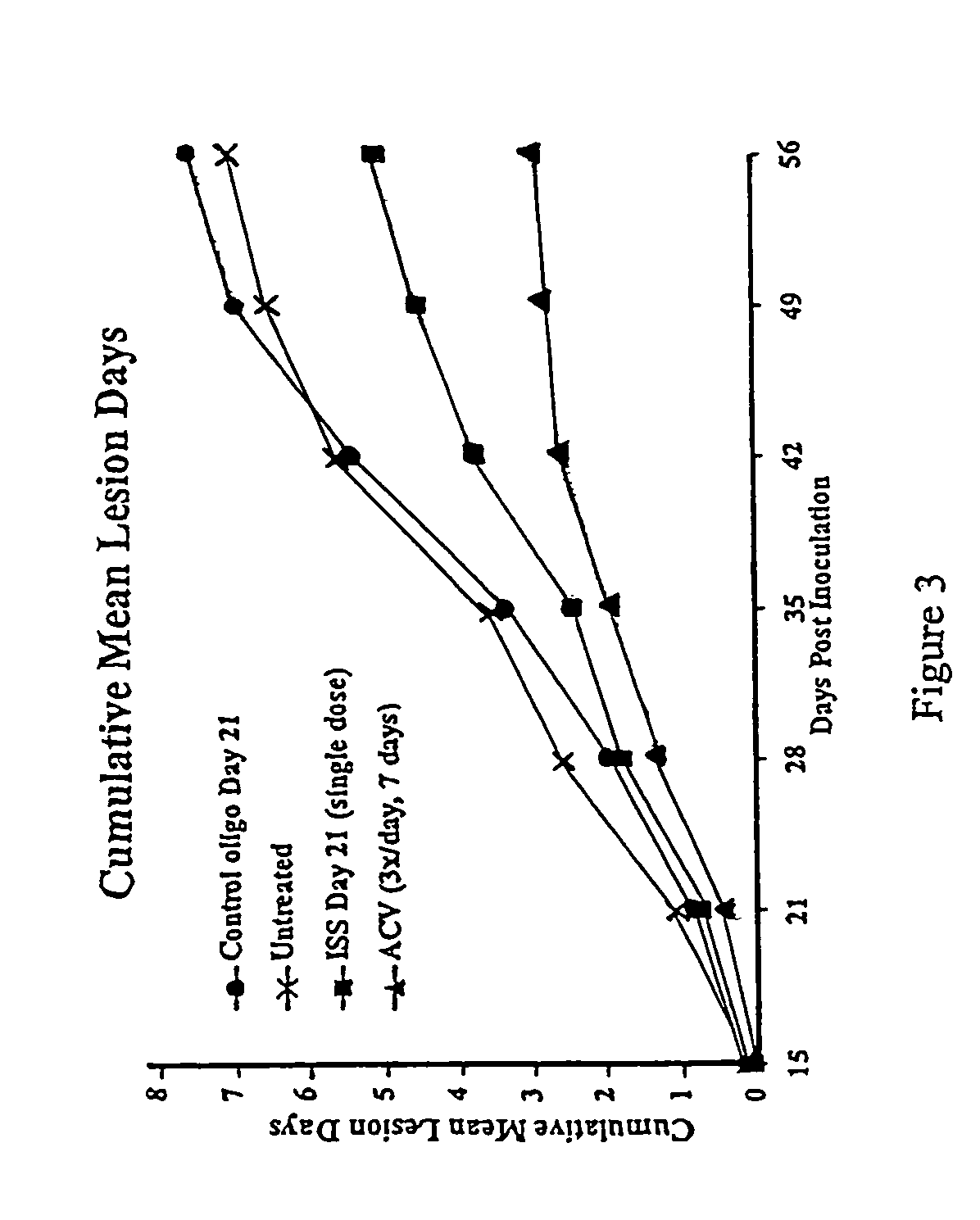Methods of ameliorating symptoms of herpes infection using immunomodulatory polynucleotide sequences
a technology of immunomodulatory polynucleotide and herpes virus, which is applied in the field of immunomodulatory polynucleotides, can solve the problems of reducing the effect of chemotherapeutics, reducing the incidence of perinatal fetal transmission, and hsv-2 being a greater public health threat, so as to reduce the incidence, recurrence, and/or severity, and prevent, ameliorate and/or prevent herpes virus
- Summary
- Abstract
- Description
- Claims
- Application Information
AI Technical Summary
Benefits of technology
Problems solved by technology
Method used
Image
Examples
example 1
Delay of HSV Disease Development in Mice by Administration of ISS
[0126]Outbred Swiss Webster mice, vaginally infected with HSV-2 strain 186, were used as a model of HSV infection. In these animals, the first indication of viral infection is hair loss and erythema (HLE) near the vagina occurring, on average, 5 days after inoculation. The next stage of infection is indicated by chronic wetness (CW) due to loss of bladder control, on average, 6 days after inoculation. A portion (about 50% of infected mice) of the animals develop hind limb paralysis (HLP) at approximately the same time point. Death, which is often preceded by evidence of CNS disease, occurs an average of 7–9 days after viral inoculation.
[0127]Mice were prepared for infection by an initial two-dose treatment with depopriven to synchronize cycles and to thin the vaginal epithelium. Vaginal mucous was removed by swabbing with calcium alginate, then a lethal challenge dose (determined by titration) of HSV-2 strain 186 was d...
example 2
Reduction of HSV Lesions in Guinea Pigs by Administration of ISS
[0133]Recurrent HSV-2 disease and aspects of the primary disease, including vesicular ulcerative lesion formation and asymptomatic shedding, are effectively modeled by inoculation of the guinea pig vagina with HSV-2 (Milligan et al. (1995) Virol. 206:234–241). In the guinea pig model, animals are infected by instillation of HSV-2 after calcium-alginate swabbing as described in Example 1. Three to five days after inoculation, cutaneous lesions develop and in some cases urinary retention is observed. The animals are scored daily for lesion severity using a 4 point scale (Bourne et al (1996) J. Infect. Dis. 173:800–807). Primary disease resolves by 14 days after inoculation (day 14 post-inoculation, d14 PI). From day 15 through 70 after inoculation, the animals are scored daily for the development of recurrent lesions. The frequency of recurrence is a significant outcome measure as it indicates any impact on latency and re...
example 3
ISS Demonstrates No Direct Activity on Viral Replication
[0140]As demonstrated in the following experiment, ISS appears to have no direct activity on viral replication.
[0141]Vero cells, a cell line derived from African Green monkey kidney, were pre-treated with varying concentrations of ISS or non-ISS oligonucleotides for varying times prior to the addition of HSV-1 or HSV-2. Oligonucleotides were used at 1 μg / ml or 10 μg / ml and the cells were incubated with the oligonucleotides for 30 seconds, 10 minutes or 24 hours. Viral titers were calculated as a percent of control titer generated by cells not treated with the oligonucleotides. The experimental conditions and results are summarized in Table 4 (NA=not available). The data are expressed as percent of control titer.
[0142]
TABLE 41 μg / ml10 μg / mlOligonucleotide30 sec10 min24 hr30 sec10 min24 hrCells infected with HSV-1SEQ ID NO:198968910010282SEQ ID NO:912995871229678SEQ ID NO:11132989714110094SEQ ID NO:10100991019610097Cells infected...
PUM
| Property | Measurement | Unit |
|---|---|---|
| diameter | aaaaa | aaaaa |
| size | aaaaa | aaaaa |
| size | aaaaa | aaaaa |
Abstract
Description
Claims
Application Information
 Login to View More
Login to View More - R&D
- Intellectual Property
- Life Sciences
- Materials
- Tech Scout
- Unparalleled Data Quality
- Higher Quality Content
- 60% Fewer Hallucinations
Browse by: Latest US Patents, China's latest patents, Technical Efficacy Thesaurus, Application Domain, Technology Topic, Popular Technical Reports.
© 2025 PatSnap. All rights reserved.Legal|Privacy policy|Modern Slavery Act Transparency Statement|Sitemap|About US| Contact US: help@patsnap.com



